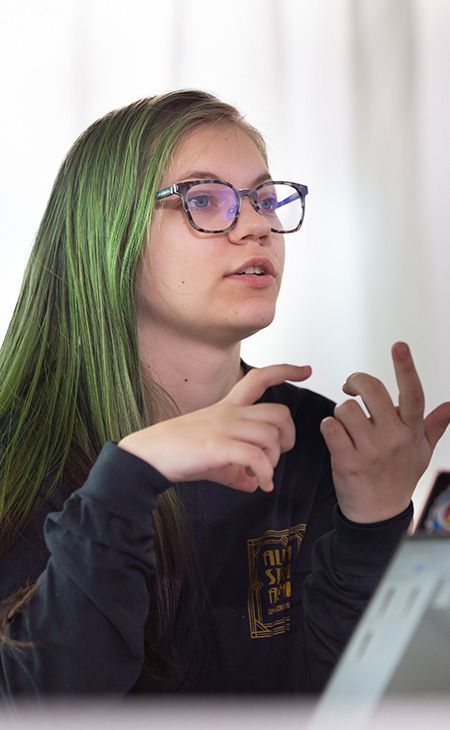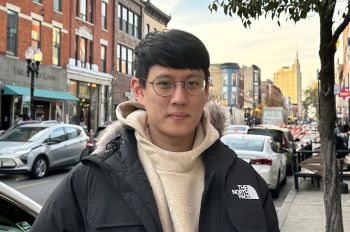Designing the Next Generation of Prosthetics
Ever since she was 5 years old, Jennifer Sabatka (BME 1st Year) knew she wanted to be a doctor. But when her family—which is full of engineers—encouraged her to try an engineering program in high school, she found that she loved it. She realized that she could combine both passions by pursuing a degree in biomedical engineering, which led her to Illinois Tech.
“Chicago is a big city, there are a lot of opportunities, and Illinois Tech is really well known for its biomedical engineering program, so when I got in, I was really excited,” she says.
Interested in beginning research in her first year, Jennifer attended RES MATCH, Illinois Tech’s initiative to pair faculty and students with similar research interests in biomedical science or biomedical engineering. At the launch event she learned of College of Architecture Studio Associate Professor Alphonso Peluso’s plans to use biomimicry design—which mimics the natural structures of nature—to create better-quality, cheaper, and more customizable prosthetic limbs. Given that Jennifer had worked with prosthetics as a high school student, it was a perfect match.
“I have always been really interested in prosthetics—how they look, how they function, and how they’re put together,” says Jennifer. “I always wanted to explore what we could do with prosthetics and how we could make them better.”
For her work, Jennifer is working with Peluso, two architecture students, and another biomedical engineering student to utilize 3D printing and generative design software to create the next generation of prosthetics for transtibial (below the knee) amputees, who make up the majority of individuals living with amputations.
By basing their designs off of naturally strong structures, then refining the design in generative design, the team can hone in on a structure that uses as few materials as necessary, making the resulting prosthetic lighter and cheaper to produce than existing prosthetics while being more durable. Additionally, by incorporating a leg scan into the making process, the team could produce a more comfortable prosthetic than existing, “off-the-shelf” solutions.
For Jennifer—who aims to head to medical school after earning her bachelor’s degree and to peruse a career in medical research—her experience in RES MATCH has already been a boon to her post-graduation aspirations in only her first year.
“It might seem really hard to get into research as a first-year student, but there are a lot of these opportunities [at Illinois Tech], and you need to make sure to take them when you get them,” says Jennifer. “I enjoy being able to have that experience and the opportunity to do hands-on learning, which at other universities you might not get. I have gained more experience doing this project than I would just doing academics all four years.”





